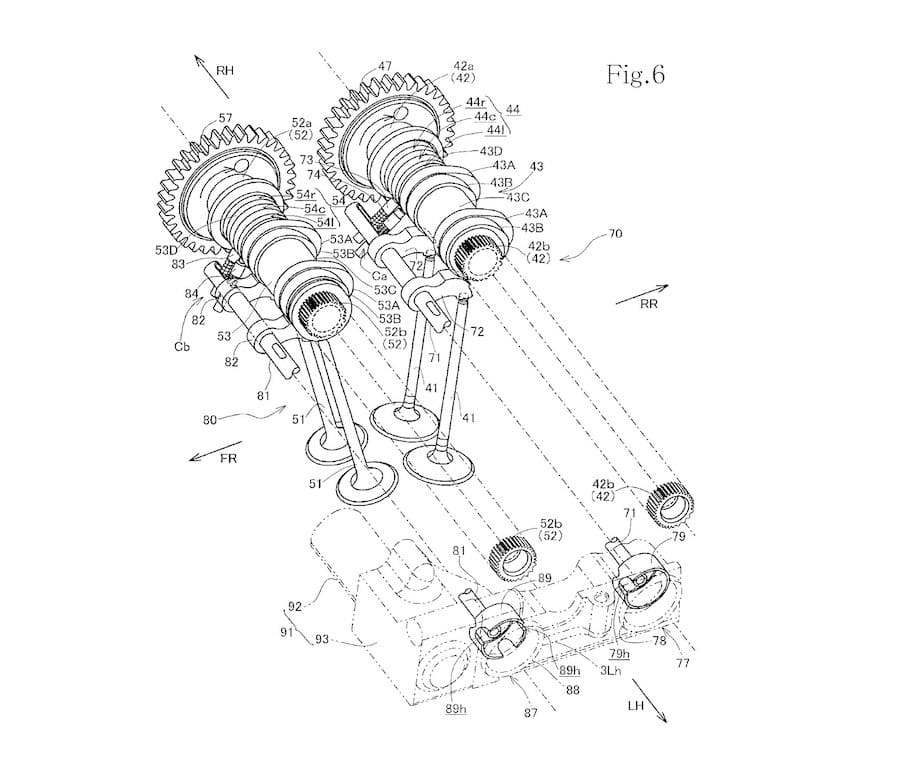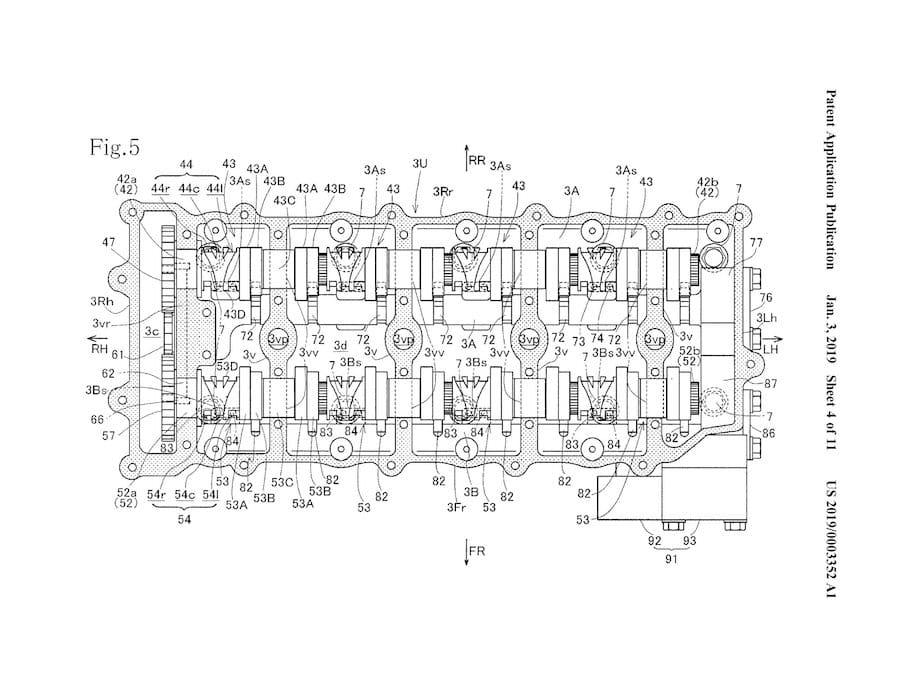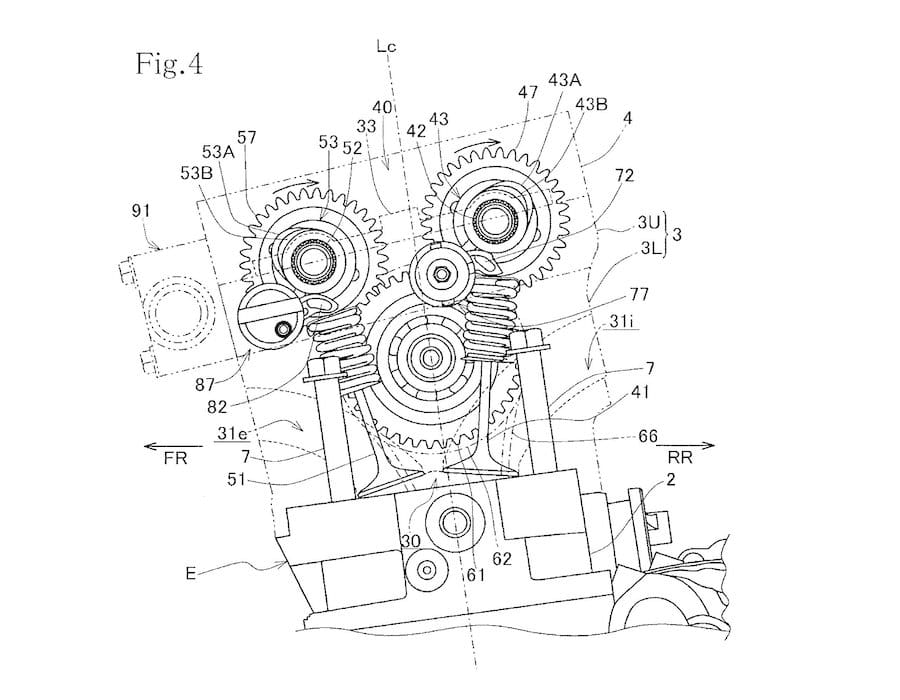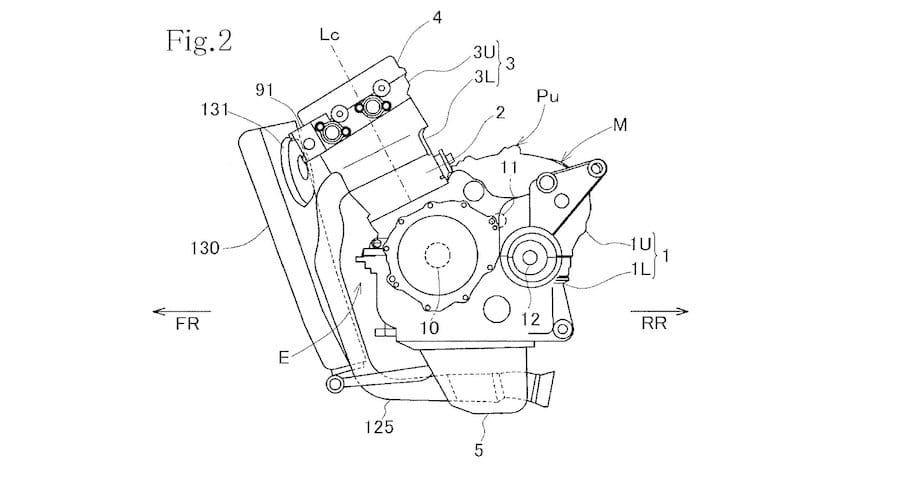Honda first introduced its VTEC system to cars in the late 1980s. Now it’s planning to introduce a similar Dr Jekyll and Mr Hyde system to its road-going motorcycles. New patent applications reveal it is hard at work on a new Fireblade most likely to incorporate variable valve timing and lift.
BMW already has a similar system on its 2019 BMW S1000RR and R 1250 twin-cylinder models which swap between cam lobes at different revs.
In fact, Honda’s new patents show a design that bears a remarkable similarity to the BMW system. The VTEC system used in cars swaps between cam profiles by engaging or disengaging rockers between the cam lobes and the valves, using oil pressure to force locating pins into or out of position. In contrast, BMW’s ShiftCam design literally shifts the camshaft from side to side, bringing either mild or performance cam lobes into position above their valves. It’s a more compact design, but one that raises its own challenges, particularly on inline multi-cylinder engines where at least one valve is open at any moment.

On the S1000RR, BMW solves that problem by splitting the intake camshaft into two pieces, each working on a pair of cylinders. These halves of the camshaft shift from mild to performance modes independently, allowing a slight delay while waiting for all the valves they operate to be closed.
Like the BMW system, Honda moves the cam lobes from side to side to switch between the low-rev and high-rev profiles. However, Honda’s design gives independent control to the valves of each cylinder, splitting the camshaft into four pieces that each deal with a pair of valves. It also applies variable lift and timing to both the intake and exhaust cams.
Honda’s patent applications clearly show the new engine fitted to a rather generic Fireblade-style sportsbike. Given the age of the current Fireblade’s basic design and the fact that its rivals are already a long way ahead on peak power figures, there’s little doubt that a ground-up redesign is coming for 2020.
By BEN PURVIS















